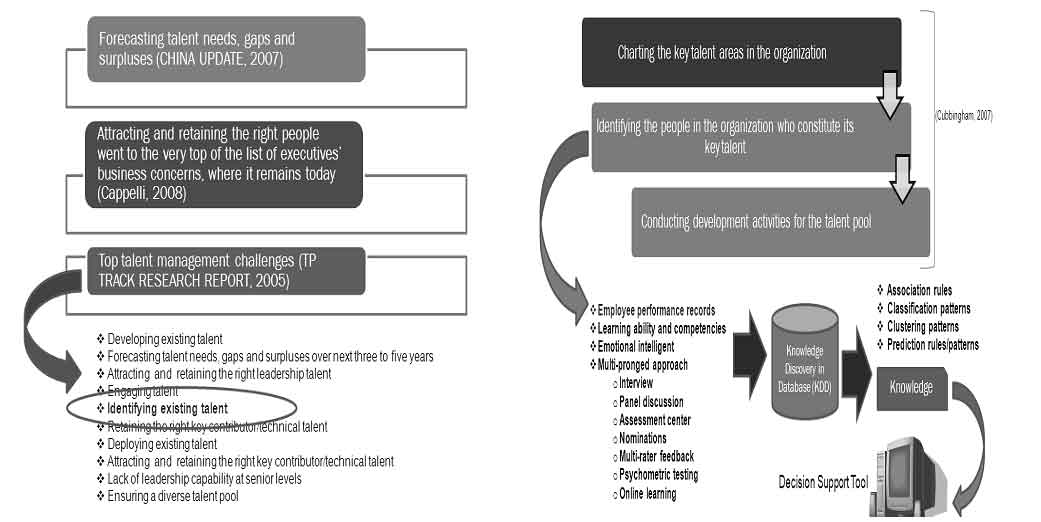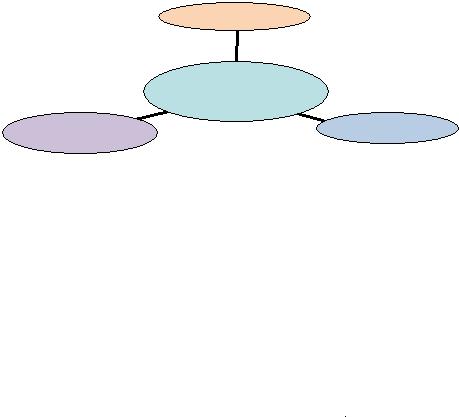
defined as an outcome to ensure the right person is in the right job; process to ensure leadership continuity in key positions and encourage individual advancement; and decision to manage supply, demand and flow of talent through human capital engine [13]. In HRM, talent management is very important and need some attentions from HR professionals. There are some issues related to talent management shown in Fig. 1.
Fig. 1 : Talent Management Challenges |
Fig. 2 : Data Mining for Talent Management |
|
|
Besides that, Fig.1 also shows the TP Track Research Report that found among the top current and future talent management challenges are developing existing talent; forecasting talent needs; attracting and retaining the right leadership talent; engaging talent; identifying existing talent; attracting and retaining the right leadership and key contributor; deploying existing talent; lack of leadership capability at senior levels and ensuring a diverse talent pool [3]. In this study, we focus on one of the talent management challenge that is to identify the existing talent regarding to the key talent in an organization by predicting their performance. In this case, we use the past data stored in the existing databases. The talent management process consists of recognizing the key talent areas in organization, identifying the people in the organization who constitute its key talent, and conducting development activities for the talent pool to retain and engage them and have them ready to move into more significant roles [13] is illustrated in Fig. 2. These processes involve HR activities that need to be integrated into an effective system [14].
2.4.Data Mining for Talent Management
Basically, most of the Data Mining researches in HR problems domain focus on personnel selection task and few apply in other activities such as planning, training, talent management and etc. Recently, with the new demands and the increased visibility of HR management, thus, HRM seeks a strategic role by turning to Data Mining methods [1]. This can be done by identifying generated patterns from the existing data in HR databases as useful knowledge. In this study, we focus on identifying the patterns that relate to the talent. The patterns can be generated by using some of the major Data mining techniques and it is shown in Fig. 3. The matching of Data mining problems and talent management needs are very important, in a way to determine the suitable Data Mining techniques.
478

